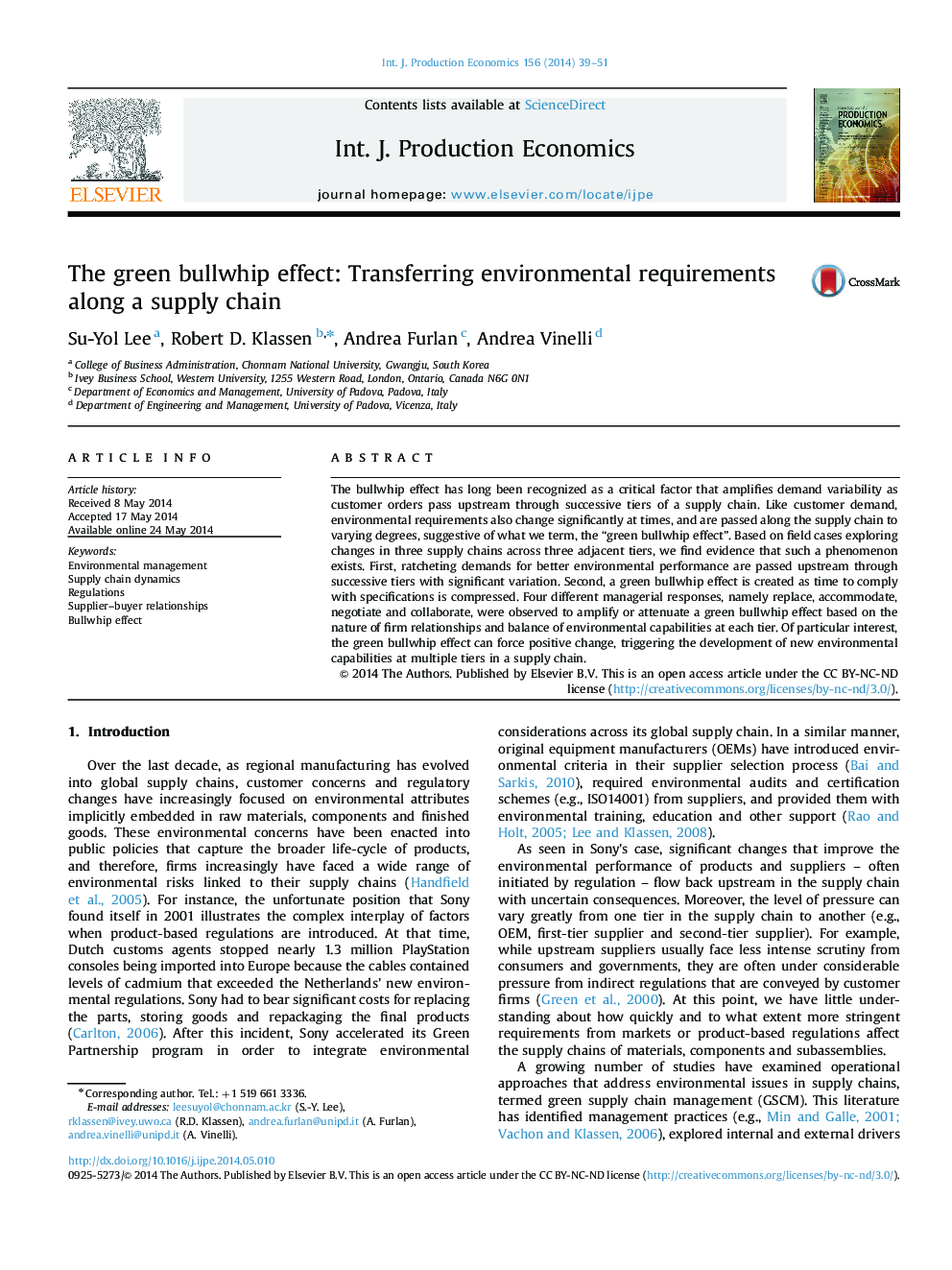| کد مقاله | کد نشریه | سال انتشار | مقاله انگلیسی | نسخه تمام متن |
|---|---|---|---|---|
| 5080005 | 1477556 | 2014 | 13 صفحه PDF | دانلود رایگان |
کلمات کلیدی
1.مقدمه
2.ادبیات پایه ای و توسعه مفهومی
2.1 مدیریت زنجیره تامین سبز
2.2. اثر شلاقی
2.3 الزامات محیطی و اثر شلاقی
جدول 1 : دینامیک موضوعات محیطی در زنجیره تامین : اثر شلاقی
3. روش شناسی
3.1 انتخاب مورد
جدول 2 : مجموعه داده های زنجیره تامین
4. نتایج مطالعات موردی و توسعه ی پیشنهادات
4.1 اعمال فزاینده حدود بسته تر و فشرده تر
جدول 3. سطوح اولیه سختگیری بکاربرده شده توسط هر سطح روی تامین کنندگانش برای شرکت Samsung SDI (RoHS).
جدول 4 : سطوح اولیه سختگیری بکاربرده شده در هر سطح روی تامین کنندگانش برای گروه .
4.2 اعمال زمانبندیهای کوتاهتر در حال افزایش
شکل 1. مهلت های اعمال شده بر شرکت برای کاهش مواد توسط مشتریان
شکل 2. مهلت های اعمال شده بر تامین کنندگان برای کاهش توسط گروه
شکل 3. زمانبندیهای اعمال شده توسط OEM های اصلی در صنعت الکترونیک : تامین کننده سطح اول منطبق با RoHS.
4.3 اقدامات مدیریت در پاسخ به اثر شلاقی سبز
جدول 5 : پاسخهای زنجیره تامین
جدول 6 : پاسخ تامین کننده به حدود سختگیرانه تر اعمال شده توسط گروه .
5. بحث
5.1 یک مدل یکپارچه
شکل 4. اثر شلاقی سبز : پاسخها و استدلالهای مورد انتظار بر مبنای ماهیت روابط دوتایی زنجیره تامین و قابلیتهای محیطی
5.2 پیامدهای مدیریتی
5.3 محدودیتها و تحقیق آتی
6. نتایج
ضمیمه A.ابزار مصاحبه
- Field data is collected from three supply chains, considering three adjacent tiers.
- A green bullwhip effect is created as requirements are passed upstream.
- Effects were two-fold: increasingly stringent requirements and less time to comply.
- Four managerial responses occurred: replace; accommodate; negotiate and collaborate.
- The green bullwhip effect can force positive change, prompting new capabilities.
The bullwhip effect has long been recognized as a critical factor that amplifies demand variability as customer orders pass upstream through successive tiers of a supply chain. Like customer demand, environmental requirements also change significantly at times, and are passed along the supply chain to varying degrees, suggestive of what we term, the “green bullwhip effect”. Based on field cases exploring changes in three supply chains across three adjacent tiers, we find evidence that such a phenomenon exists. First, ratcheting demands for better environmental performance are passed upstream through successive tiers with significant variation. Second, a green bullwhip effect is created as time to comply with specifications is compressed. Four different managerial responses, namely replace, accommodate, negotiate and collaborate, were observed to amplify or attenuate a green bullwhip effect based on the nature of firm relationships and balance of environmental capabilities at each tier. Of particular interest, the green bullwhip effect can force positive change, triggering the development of new environmental capabilities at multiple tiers in a supply chain.
Journal: International Journal of Production Economics - Volume 156, October 2014, Pages 39-51
